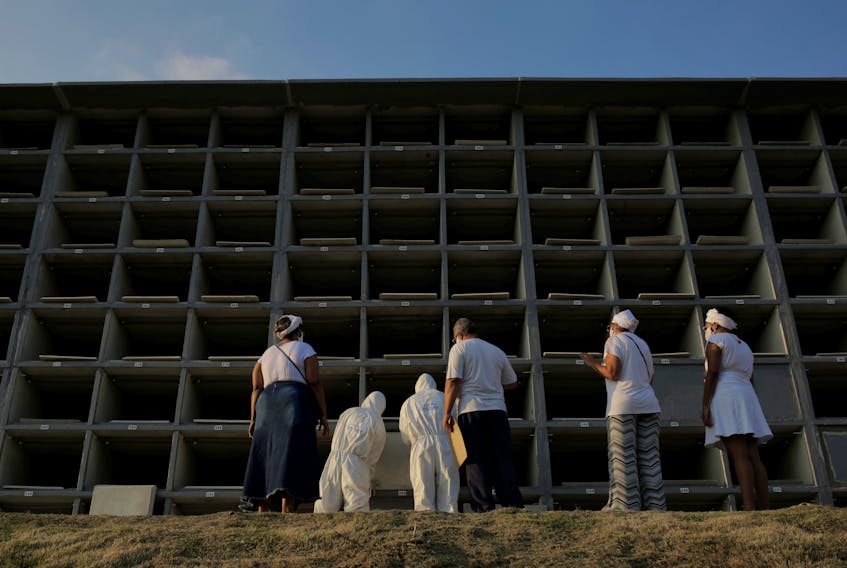As other parts of the world recuperate, Latin America has become the epicentre of COVID-19, with upward of 2.5 million cases of the 10 million global total and more than 100,000 deaths. Fatalities continue to escalate and will likely surpass those of the United States. The pandemic, however, is not the first to have ravaged the region and cause such grief.
On Oct. 12, 1492, the landfall of Columbus may well have unleashed the greatest destruction of human lives in history. The toll exacted on Indigenous peoples was catastrophic. Massive depopulation in the wake of Columbus was a consequence of vulnerablity to contagions against which Amerindians had no immunity. What kind of numbers are we talking about?
Hispaniola
Hispaniola, today Haiti and the Dominican Republic, is the worst-case scenario. Its inhabitants were the first “Indians” not only to be so labelled but also the first whose island home was invaded and destroyed — and them along with it, just like the Beothuk of Newfoundland.
Estimates of Hispaniola's population at contact are as high as eitht million. By 1519, a quarter-century after Columbus came ashore, Hispaniola had been gutted by smallpox, carried by crew during the admiral’s second voyage in 1493. Thereafter, Spaniards wanted little to do with the ruin smallpox wrought. Riches beckoned on the mainland to the west, toward which sailed the conquistador Hernán Cortés.
Mexico
Cortés landed at Veracruz on Good Friday, 1519. He soon realized that he had entered a populous realm. Its splendours were many, but none more spectacular than the Aztec capital, Tenochtitlán. There Cortés was welcomed and treated hospitably. After his intent to seize power became apparent, he and his men were driven out. They sought safe haven in nearby Tlaxcala, whose people sided with the Spaniards against the Aztecs.
A year passed before a Tlaxcalan-Spanish alliance forced the surrender of Tenochtitlán. Its fall on Aug. 13, 1521, came about because of the turmoil caused by another outbreak of smallpox. How many perished from it, in Tenochtitlán and the rest of Mexico, depends on how many we think were alive to begin with. An estimated 25 million is plausible. Disease outbreaks in the century following Spanish invasion signalled precipitous Indigenous depopulation, calculated at over 90 per cent.
Guatemala
Native numbers in Guatemala were around two million. Post-contact demise conforms to the trajectory for Mexico, devastation triggered by eight pandemics. Sickness arrived in Guatemala years before the Spaniards themselves did. The advance guard that cut down the Maya played a similar role in the campaign launched by Francisco Pizarro to conquer the Inca Empire.
Ecuador and Peru
Smallpox reached the Andes in 1524. There it resulted in considerable loss of life. Disruptions caused by illness facilitated Spanish victory. Like Aztec Tenochtitlán, the Inca capital Cuzco was taken as much by contagion as by the might of Pizarro.
In Ecuador, a contact population of 1.6 million fell to a fraction that size by 1618. A figure of nine million for Peru straddles a range of estimates from four million to 15 million. A century later, following more than 20 epidemic outbreaks, the heirs of the Incas numbered 600,000.
Hemispheric reckoning
Geographer William Denevan champions a contact population of 54 million for all the Americas in 1492, a tally he considers conservative.
We will never know how many Native Americans died in the pandemic aftermath of Columbus, but fatalities upward of 50 million cannot be ruled out.
Despite COVID-19’s alarming rates of infection, medical advances and humanitarian efforts make it unlikely that deaths from it will approximate the Amerindian holocaust of five centuries ago.
W. George Lovell,
professor of geography,
Queen's University.









